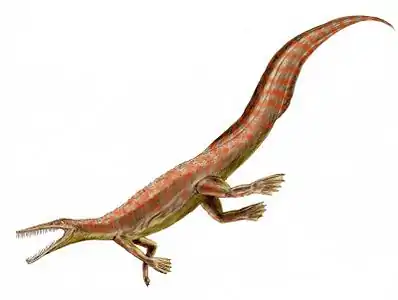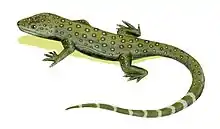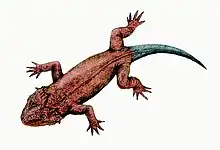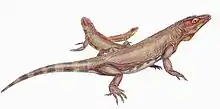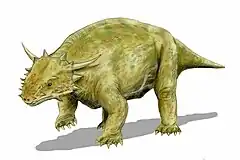| Pumiliopareia Temporal range: Changhsingian, | |
|---|---|
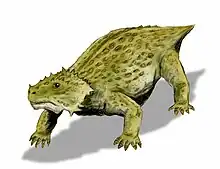 | |
| Life restoration of Pumiliopareia pricei | |
| Scientific classification | |
| Kingdom: | |
| Phylum: | |
| Class: | |
| Order: | |
| Family: | |
| (unranked): | |
| Genus: | Pumiliopareia Broom and Robinson, 1948 |
| Type species | |
| †Nanoparia pricei Broom and Robinson, 1948 | |
| Synonyms | |
| |
Pumiliopareia is an extinct genus of pareiasaurid parareptile from the Permian period of South Africa. It is known from a complete skeleton with osteoderms.
Description
Pumiliopareia was about 50 cm (19.6 in) in length with a 12 cm (4.7 in) skull. It is the smallest known member of the pareiasaurs, measuring only a fifth as long as some of its larger relatives. Like Anthodon, its body was entirely covered with osteoderms. In analyses that support a pareiasaur origin of turtles, the sister taxon of the testudines. However it specifically shares with turtles a single trait only: Ribs greatly expanded anteroposteriorly (i.e. wide).
Classification
Originally included under the genus Nanoparia,[1] it was given its own name by Lee 1997 who found it did not form a clade with Nanoparia luckhoffi, the type species of that genus, and preferred to have monophyletic genera.[2] Nanoparia may still be a paraphyletic genus, which is allowed in Linanean binomial taxonomy, or it may be that all three pumiliopareiasaurs are similar enough to belong to single genus.
External links
- Elginiidae and Pumiliopareiasauria at Palaeos
References
